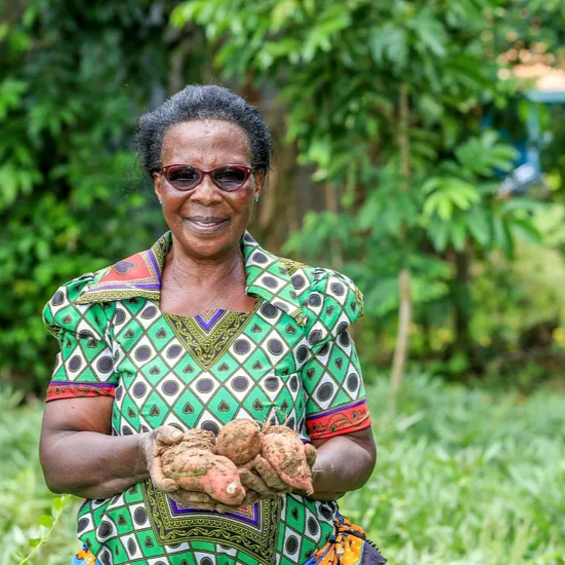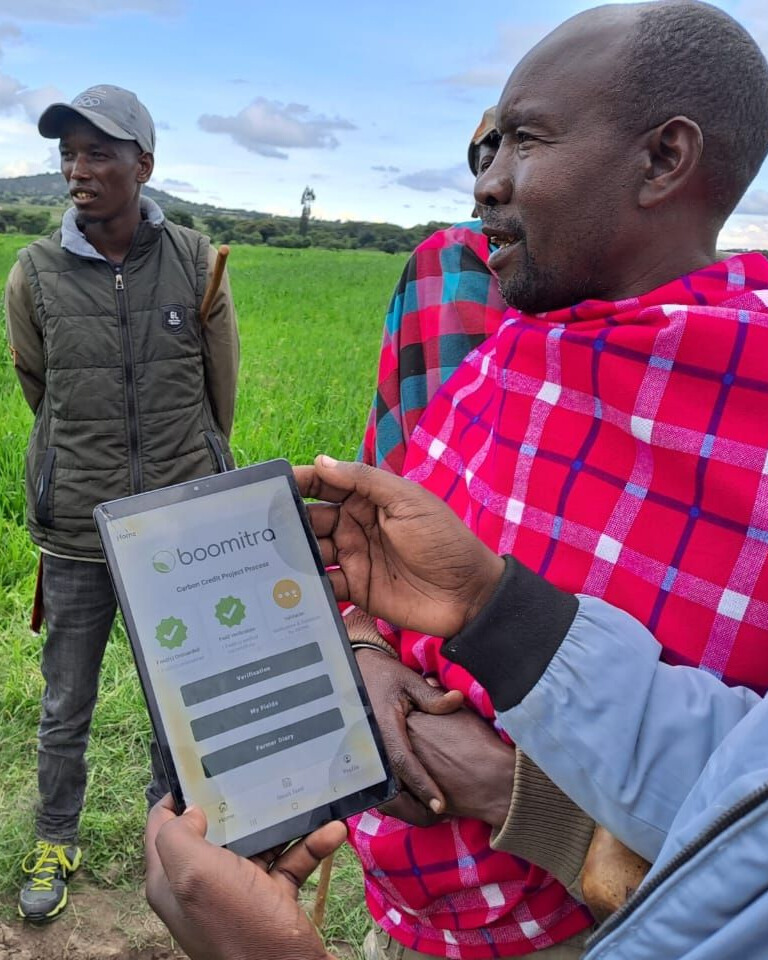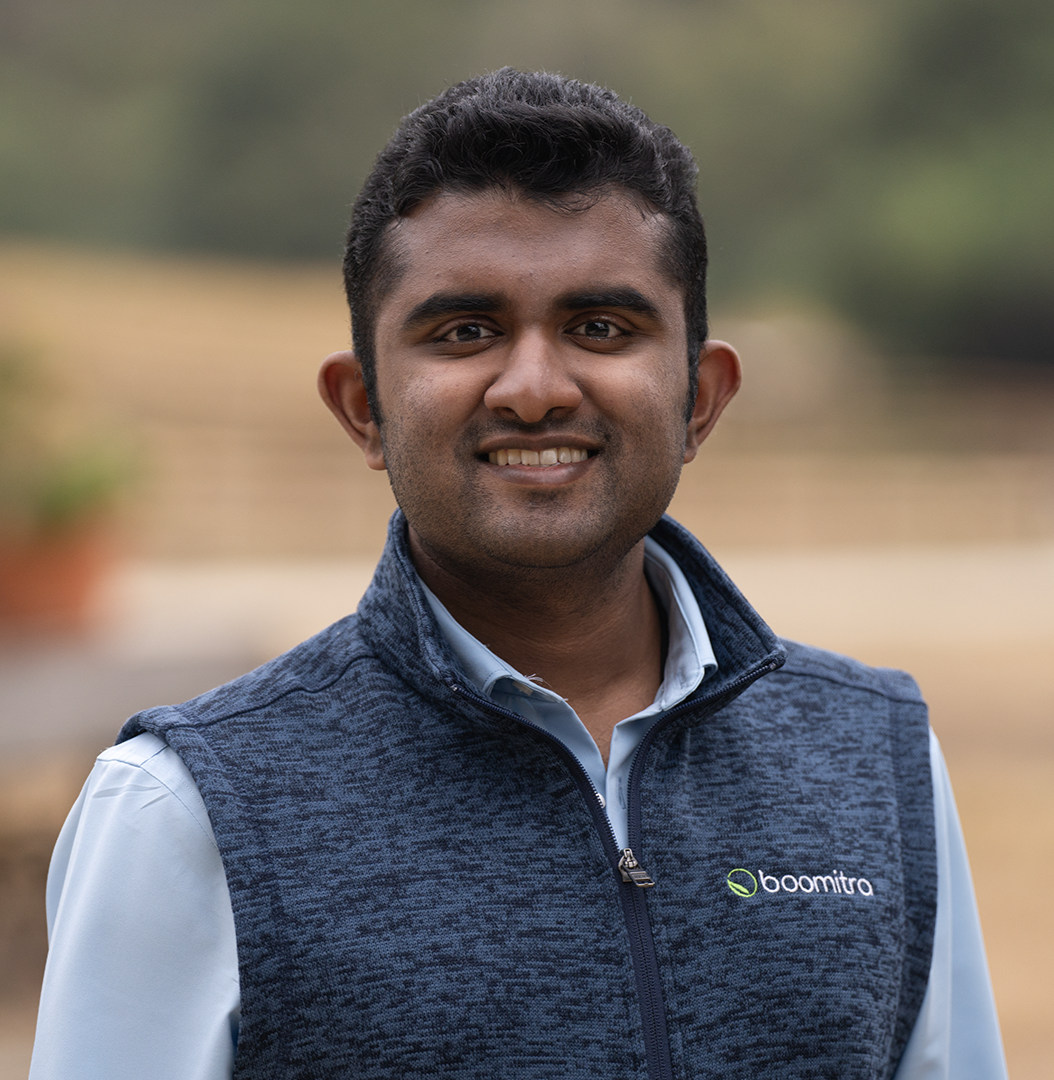Boomitra Carbon Farming in East Africa Project
Regenerating soils, strengthening rural livelihoods, and delivering measurable climate action across East Africa.
"“In my childhood, the weather patterns were steady, the rains came at specific times, and so our parents knew when to plant and when to harvest, but now the climate is very unstable. If you do not take the right measures, you will not have a good harvest."
-Hannah Karanja, Kenya Carbon Farmer

Be the first to get project updates
Sign up for our newsletter to get the latest news, insights, and project updates straight to your inbox.

Our Carbon Farming in East Africa
Boomitra’s East Africa Carbon Farming Project supports smallholder farmers across Kenya and the region with regenerative practices like composting and reduced tillage. These techniques improve soil health, boost yields, and remove carbon from the atmosphere—generating verified carbon credits as a new source of income.
The project covers 44,670 acres and uses AI and satellite technology for accurate, scalable monitoring. Boomitra works with partners like Yara East Africa, the Kenya Organic Agriculture Network (KOAN), and the Cereal Growers Association through the Farm to Market Alliance (FtMA) to provide training, digital tools, and field support—ensuring even farmers with as little as one acre can participate.
“Two years into regenerative agriculture, I’ve seen big improvements on my farm: healthier crops, increased yields, and higher profits. These days, I organize field days to train fellow farmers in climate-smart agriculture.”
– Dismus Pere, Narok South, Kenya
Farmer stories:
The people behind the impact
-1.png)
Smallholder Farmers Driving Change in Kenya
Across Kenya’s croplands, smallholder farmers are adopting regenerative practices that restore soil health and capture carbon. These changes are helping families improve harvests, lower input costs, and access new income from carbon credits.

Narok Farmers Cultivate Climate Solutions
In Narok County, Kenyan farmers are building resilience through regenerative agriculture. By storing carbon in their soils and strengthening ecosystems, they are creating more reliable harvests and new opportunities for their communities.
.png?width=250&height=250&name=E_PRINT_01-modified%20(1).png)
"Our East Africa project demonstrates the power of regenerative agriculture to transform livelihoods and landscapes. By equipping smallholder farmers with the tools and training they need—and pairing that with advanced technology—we’re scaling real climate impact while building resilience from the ground up."
-Aadith Moorthy, Boomitra CEO & Founder






How big is this project?
- 1,000 farmers
- 44,673 acres (18,078 hectares)
- Estimated 88,294 tonnes of CO2 removed annually
Since the first monitoring period, we've already grown the project to 3,730 farmers and 136,532 acres. We anticipate growing the project to over 300,000 acres by 2030.
What regenerative practices do you use for this project?
How are soil carbon changes measured and verified?
How is reversal risk managed?
What percentage of credit revenue goes to farmers?
55% of gross carbon revenue is paid directly to farmers and ranchers. Another 20% goes to local implementation partners who are contractually obligated to reinvest in community-based support, ensuring 75% of value stays with local stakeholders.
Farmers and ranchers also benefit from numerous co-benefits.
Is participation voluntary? Are farmers required to purchase specific products?
Participation in all Boomitra projects is voluntary and requires full, informed consent. Growers digitally sign agreements and may withdraw at any point before verification without penalty.
Farmers are not required or incentivized to buy fertilizers, seeds, or tools from any company, including our investors or implementation partners.
How do you ensure long-term participation and impact?
We offer training, field support, digital tools like the Boomitra app and Mitra, our conversational GenAI assistant that communicates with farmers in local languages, and equitable revenue sharing. These create durable incentives for continued climate-smart land management.


.png?width=249&height=83&name=VCS-Logo-Verra-Color%20PNG%20(1).png)